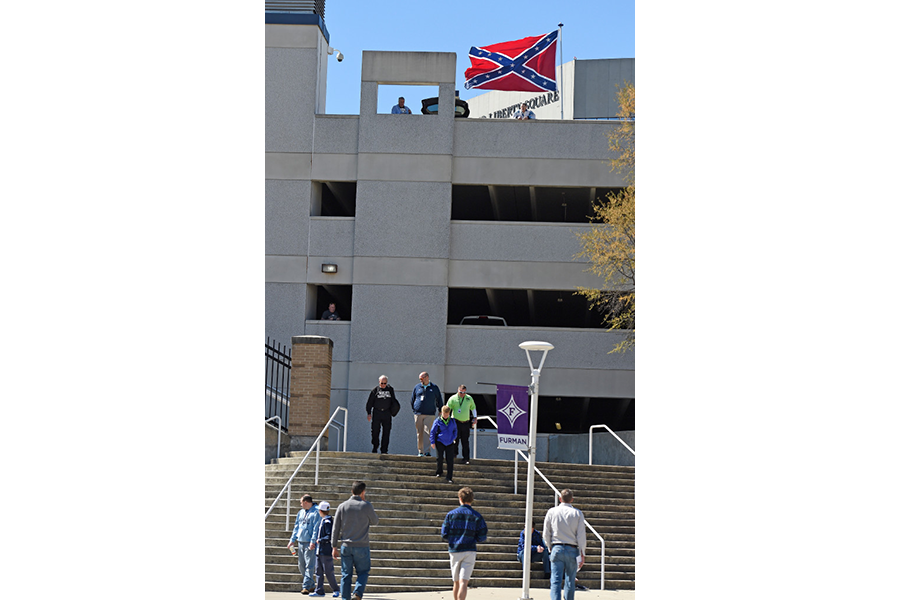Why were Confederate battle flags flown during March Madness?
Loading...
It has nothing to do with basketball, but an incident during NCAA March Madness games served as a reminder that the south still struggles with the complicated symbol that embodies the scars of the Civil War and modern racial tensions.
The Confederate battle flag flew conspicuously over the parking garage for the South Carolina stadium hosting two NCAA March Madness basketball games on Sunday. A small group hoisted the large flag to protest the NCAA’s opposition to the symbol, which had resulted in a boycott of Greenville, S.C., as a game site since 2001.
Greenville police asked the group to move the truck holding the flag back from the edge as a safety measure, but otherwise respected the group's legal right to peacefully express their frustration.
The NCAA banned South Carolina from holding championships in 2001 while the battle flag flew over the statehouse, and lifted the ban in 2015 when the state legislature voted to remove the flag in the wake of the Dylann Roof shooting of nine black Charleston church goers. The removal of the flag prompted a backlash, causing the popularity of the symbol to surge in some areas.
Mr. Roof had posed with the flag on social media prior to the attack, and many believe it to be a symbol that incites racial violence.
This year’s return of the tournament took place in part because the NCAA is now boycotting North Carolina for its House Bill 2, which, among other things, requires transgender people to use the bathroom aligning with the biological sex indicated on their birth certificates.
The underdog South Carolina team pulled off an upset over the highly seeded Duke University team to advance to the next round of the NCAA tournament for the first time. Their coach, Frank Martin, praised South Carolina and defended the state, saying it had always been accepting of him as the son of Cuban immigrants with a diverse family.
“I wouldn’t want to coach in any other state or with any other group of people, for any other bosses than the ones I’ve got. Our alums, our community is a beautiful, beautiful place. It’s a united state. Unfortunately, things like that happen, but we live in the United States of America – and we don’t all agree on things.”
Mr. Martin also spoke in defense of the protesters, recognizing their right to free speech, even if he disagreed with their message.
"Our state's progressive. Our state has incredible people (who are) about moving forward," he said. "But it's America. We have freedoms. People have freedoms to do whatever they want to do with themselves and their property."
The NCAA seemed to agree, confirming that the parking garage fell under the jurisdiction of the city of Greenville and supporting the city's handling of the situation.
“We are committed to assuring that all events are safe and accessible to all... Freedom of speech activities on public property in areas surrounding the arena are managed by the city of Greenville and we are supportive of the city’s efforts,” NCAA’s Dan Gavitt said in a press release.
The statement implied that no such demonstrations would be tolerated on private property under the control of NCAA.
In addition to the rooftop flag, about a dozen flag-carrying protesters gathered across the street from the arena’s main entrance.
“I didn’t feel it was right when the flag came down [from the state house],” said one protester, who told the Associated Press that his ancestors fought for the Confederacy in the Civil War. “We wanted to show the NCAA that we’re still here.”








